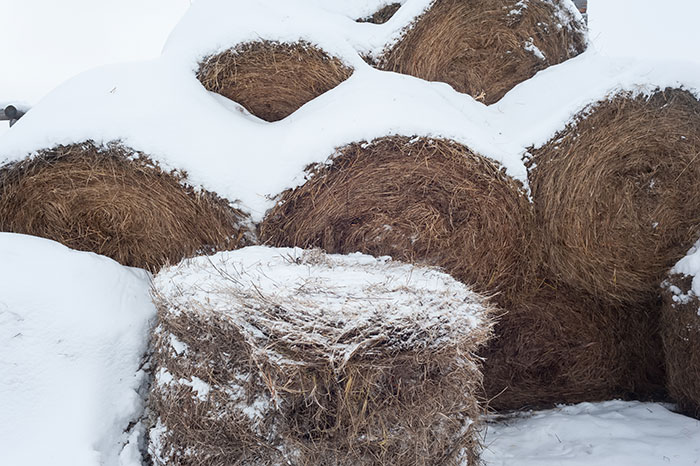
Winter presents a whole new set of challenges to livestock producers. Not only does Mother Nature grace us with snow, for some of us, but also colder temperatures. We’re not the only ones who feel the strain of winter; livestock also must cope with the elements.
“Providing additional hay to cattle during cold weather is certainly a good practice,” says Kim Mullenix, extension beef cattle systems specialist at Auburn University.
Energy needs are higher in cold weather
In cold conditions, cattle will consume as much as 30 percent more forage. This means that animals are expending more energy to maintain body heat.
According to Mullenix, depending on the quality of the forage and the extent of the cold weather, hay may or may not meet these elevated requirements alone.
“The best strategy for helping the cow meet her energy needs in cold weather is to make sure that moderate to good-quality hay, greater than 52 percent total digestible nutrients (TDN), is available free-choice, and provide 20 to 30 percent more energy supplement,” Mullenix recommends.
Feeding only low-quality hay, less than 52 percent TDN, will not meet energy requirements even with the elevated consumption. As more low-quality hay is consumed, cattle become more at risk for compaction of the digestive tract. Supplement a fiber-based energy supplement, such as soy hulls or whole cottonseed, if low-quality hay is the only available source.
The beef specialist suggests considering feeding cattle in the late afternoon or early evening. Heat production by the animal is highest four to six hours following eating, so a later feeding time will help animals produce more heat during the coolest point of the day.
Utilize limit grazing
When temperatures are low, forage growth slows. Continuing to graze these forages during cold temperatures can lead to overgrazing, which will result in less regrowth once warmer temperatures return.
Mullenix recommends beginning grazing when forages are 6 to 8 inches tall and stop once grazed down to 2 to 3 inches.
“When temperatures drop and forage growth has stalled, consider removing livestock from the area until temperatures rebound,” Mullenix says. “When weather begins to warm and growth begins again, consider limit grazing the area to better utilize forage.”
Limit grazing involves moving animals onto high-quality forages for a short duration, three to four hours, and then moving them to a dry lot with access to hay. Limit grazing can be used to stretch hay supply by limiting hay consumption. Hay digestibility may even improve from a better rumen fermentation environment as a result of grazing.
Know limit-feeding boundaries
Limit-feeding hay is another option to stretch hay supplies. This involves either limiting the amount of time animals have access to hay, usually around six hours per day, or reducing the amount of hay given.
Mullenix strongly advises avoiding this practice during extreme weather conditions. “Allow animals free-choice access to hay during periods of environmental stress,” she explains. Limit feeding is not a practice that should be used with low-quality forages or thin cows.

Kassidy Buse was the 2018 Hay & Forage Grower summer editorial intern. She is from Bridgewater, S.D., and graduated from Iowa State University with a degree in animal science. Buse is currently attending the University of Nebraska-Lincoln pursuing a master’s degree in ruminant nutrition.

